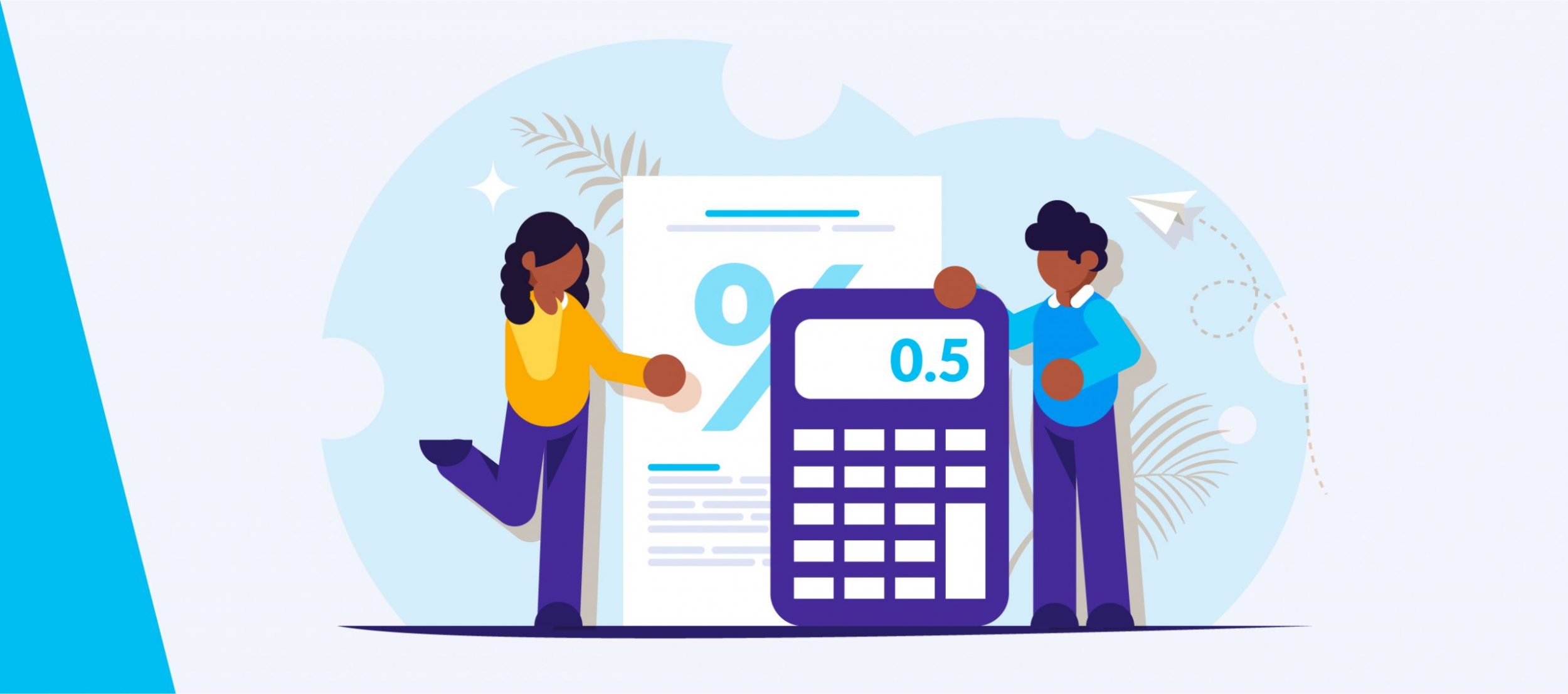Integrated Marketing
Finances can be hard to talk about — especially with a stranger. But unless your customers or members are planning to borrow money from family or friends, they probably will darken your doorstep when it’s time to buy a car, buy a house, make home improvements, or even pay down debt they already have.
Since we’re living in a time in which everything has seemingly gone digital, why not lean into that? Instead of a boring old site that lists your branch locations, gives a little bit of detail about each of your accounts, and features years-old pictures of your leadership team, you can turn your website into a financial education-driven marketplace that educates prospects and consumers alike — baiting the hook with knowledge-based content that will up your online metrics and position your FI as the subject matter expert amongst your competition.

But before we dive into one way to step up your game, let’s look back at what’s happened in the world around us. Websites — and, well, the internet itself — seem to evolve faster and with more frequency each year, and the video games you and I played as kids look absolutely prehistoric compared to those installed on phones, tablets, and fully loaded gaming computers today.
Do you know why there are so many games out there? The answer is simple. People love them — and love playing them. Now it’s time for you to take advantage of their passion and gamify your customer-facing digital toolset.
The Era of Gamification
In hopes of reaching new prospects and unengaged customers, many financial institutions just like yours are adding aspects of gamification into their sales and bank marketing strategies. Simply put, gamification is the addition of game elements to non-game activities like buying a house, getting an auto loan, or consolidating debt.
For some, face-to-face contact will consistently rank highest, but let’s say you offered a set of easy-to-use, easier-to-understand financial calculators on your bank or credit union’s website — ones that could help consumers see just how much they could afford, determine what their payment would be, and see how much interest they might pay — 24 hours a day, seven days a week. Cool, right?
But before you say, “my customers wouldn’t use those,” we’d like to offer some data that may be eye-opening to you. (Spoiler alert: financial calculators work.)
Right now, research shows that more than two million consumers in the U.S search for financial calculators every single day. That’s almost a billion people a year who use financial calculators as the first step toward their brighter financial future.

Due to their always-on availability, financial calculators are convenient, too. Where your customers or prospects once had to take off work and drive to your office during business hours, open up about their financial needs, and layout their finances to you (all while silently praying that you’d tell them their goals might actually be attainable), much of this process could be done right online.
“Personal finance calculators camouflage data collection with value and gamification,” wrote self-proclaimed “growth hacker” Monika Ben. “Calculators offer genuine, individual, case-specific help to everyone using them, and asking your website visitors for sensitive information about their personal finance is a lot easier when it doesn’t feel like that’s what you’re doing.”
Best of all, there’s no limit to what you can offer on your website — from mortgage calculators to loan amortization calculators and everything in between — more and more consumers are using them every single day.
Four Benefits of Financial Calculators
Done right, financial calculators can help you improve your site’s search engine optimization (SEO) ranking, give site visitors honest answers to their financial questions, boost their financial literacy, and — most importantly — turn visitors and prospects into engaged, satisfied customers.
Let’s take a look at each benefit in greater detail:
- Terms like “retirement calculator,” “mortgage calculator,” “interest calculator,” and “auto loan calculator” are some of the highest searched terms on the internet today. So, offering these types of calculators (and giving people what they’re searching for) means you can improve SEO and boost traffic to your bank or credit union’s website.
- If a prospect or current customer can use a calculator to figure out their monthly payment before applying, you should get more quality leads. This means fewer applicants will be hit with a massive number that they weren’t expecting, while others — those who realize they can’t afford a big loan — will most likely be weeded out before they even apply for one.
- Having a series of financial calculators lets consumers learn how finances work and “play around” with numbers in a low-pressure situation. Subsequently, any calculations returned can help them know where they need to make financial strides or improve applicant confidence should they apply for a loan or line of credit.
- As we circle back around to gamification, the more fun you can make finances, the less stressed consumers will be. And, the more time they spend playing, the more opportunity you have to promote your financial institution’s products and services — and turn prospects into customers.

Best Practices
As you turn toward boosting site traffic, SEO, and consumer knowledge, there are a few things to know about financial calculators.
- Don’t do anything without thinking it through. A careful, strategic approach will help you determine the types of calculators you’d like to add, along with a smooth, seamless call to action (what you want the user’s “next step” to be) for each.
- Ever get an email from a company that just doesn’t look or feel like something you’d expect from them? Website enhancements are the same way. Consistency is critical, so ensure your calculators are developed and marketed with your bank’s brand and messaging in mind. Nothing’s more jarring than visiting a fully fleshed-out website with a single piece of content that sticks out like a sore thumb.Is your current brand light and airy? A rigid, out-of-the-box calculator that doesn’t allow you to change elements of type, design, or — well — fun will look like something you went plug-and-play with and could distract from the user experience.
- About that user experience… anything that makes life more challenging for them is a no-no. Consumers are coming to your site because they know they’re not the financial expert. Make sure your calculators are easy to use and easy to understand. Here are a few tips:
- Think mobile-first. Having a nifty calculator on your website is great — unless it becomes inoperable when people try to access it on a phone or tablet. Be sure that anything you create (or have created for you) is mobile-friendly.
- Calculators that offer toggles and sliders to adjust values make it easier for users to explore different scenarios and situations.
- Include helpful prompts, guides, or instructions for complex calculations.
- On more complicated calculators, make sure you include any necessary prompts and guides. You don’t want users to get “stuck” and log off your website in favor of another that turned up in search results.
- As a reminder, be sure that each financial calculator includes a defined, specific call to action. This is your opportunity to move each user further along their prospect journey. Determine the best way to help them get there and make it easy to find.

We’re Here to Help
If you’re interested in creating calcualtors for your financial institution’s website, talk to a BankBound strategist today. We’ve worked with financial institutions of all sizes and can create user-friendly financial calculators that increase customer and prospect engagement while delivering high-quality bank prospects to your digital doorstep.

